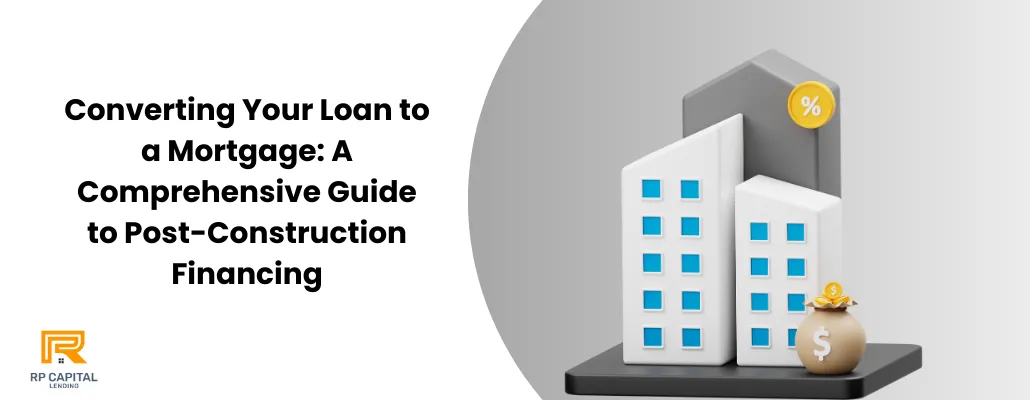Blog

Converting Your Loan to a Mortgage: A Comprehensive Guide to Post-Construction Financing
"Turning your construction project into a finished home is just the beginning—now, it's time to secure a permanent mortgage that fits your financial future."
Building a home is a monumental achievement, but the journey doesn’t end once the construction is complete. To transition from construction to comfortable living, you need to convert your construction loan into a mortgage. Here’s everything you need to know to make this process seamless and straightforward.
What is Post-Construction Financing?
Post-construction financing is the process of transitioning your short-term construction loan into a long-term mortgage. This type of financing is essential to cover the cost of the construction loan and to secure a manageable repayment plan for your new home.
Steps to Convert Your Loan to a Mortgage:
Completion of Construction: Ensure that all construction work is completed and the property is ready for occupancy. Obtain a certificate of occupancy if required by local regulations.
Appraisal: Have your property appraised to determine its current market value. This appraisal is crucial for the mortgage approval process.
Credit Check and Documentation: Update your credit report and gather necessary financial documents, including proof of income, tax returns, and any other required paperwork.
Choose a Mortgage Type: Decide between a fixed-rate or adjustable-rate mortgage. Each has its advantages, depending on your financial situation and future plans.
Apply for the Mortgage: Submit your application to a lender. This process may involve several steps, including underwriting and final approval.
Closing the Loan: Once approved, attend the closing meeting to finalize the mortgage. Sign all required documents and pay any closing costs or fees.
Benefits of Converting to a Mortgage:
Lower Interest Rates: Construction loans typically have higher interest rates. Converting to a mortgage can reduce your interest rate and monthly payments.
Predictable Payments: A fixed-rate mortgage offers consistent monthly payments, helping you budget more effectively.
Long-term Financing: Mortgages provide long-term financing solutions, often up to 30 years, making homeownership more affordable.
Equity Building: With each mortgage payment, you build equity in your home, which can be a valuable financial asset.
FAQs About Post-Construction Financing:
Q1: What happens if my construction is delayed?
If your construction is delayed, communicate with your lender. They may extend the loan term or offer alternative solutions to avoid financial strain.
Q2: Can I switch lenders when converting my loan?
Yes, you can choose a different lender for your mortgage. Shop around for the best rates and terms before making a decision.
Q3: What documents do I need for the mortgage application?
You’ll need proof of income, tax returns, credit report, appraisal report, and any other documents required by your lender.
Q4: How long does the conversion process take?
The process typically takes 30 to 60 days, depending on your lender and the complexity of your financial situation.
Q5: Are there any additional costs involved in converting the loan?
Yes, you may incur costs such as appraisal fees, closing costs, and potential lender fees. It’s important to budget for these expenses.
Conclusion
Converting your construction loan to a mortgage is a critical step in securing the financial foundation of your new home. By following the outlined steps and being prepared with necessary documentation, you can transition smoothly from a short-term construction loan to a long-term mortgage. This process not only stabilizes your financial situation but also helps build equity in your home, ensuring peace of mind and financial security for years to come.
RP Capital Lending is a d.b.a of RP Capital Partners Inc (NMLS # 2469193) | Privacy Policy
Copyright © 2022. All Rights Reserved.
Disclaimer: Loans only apply to non-owner occupied properties. Rates, terms and conditions offered only to qualified borrowers, may vary upon loan product, deal structure, other applicable considerations, and are subject to change at any time without notice.

